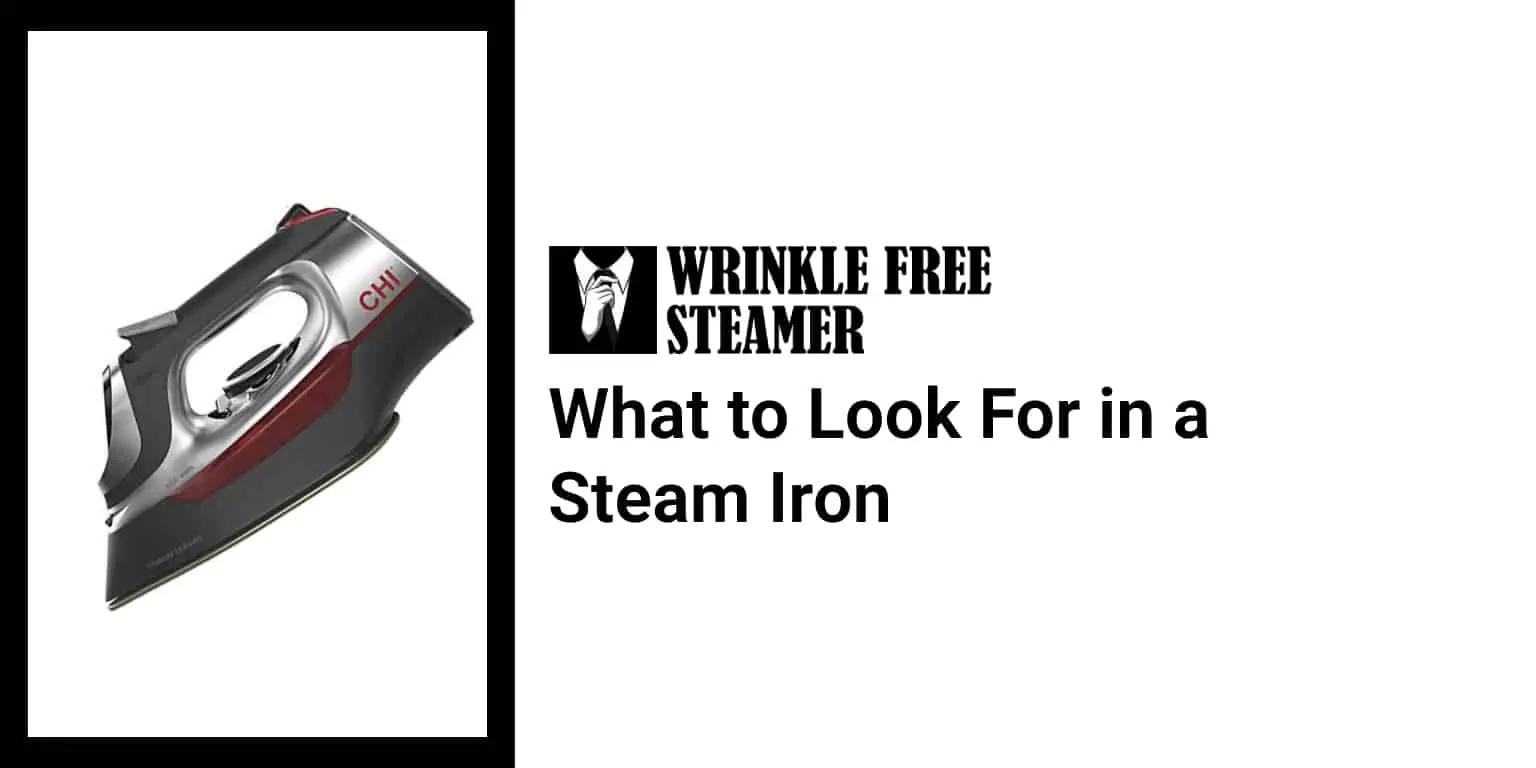As an Amazon Associate we earn from qualifying purchases.
There’s a reason you don’t see any wrinkled clothes in fashion stores. They’re always crisp and clean, otherwise they’re not gonna sell. As much as you look for the most attractive-looking stock of the clothes you’re gonna buy, their appeal is only gonna last until the next wash if you don’t have a high quality iron.
There are so many qualities to look for yet so many people are clueless about them. Not anymore when you go through our list of features to look out for.
What to Look For in a Steam Iron
The dry iron is what we’ve known to use for years, and that familiarity may keep you from trying out the steam iron. However, some would use a separate water spray to sprinkle and dampen their clothes before using a dry iron. It’s just a similar concept to what a steam iron does anyway, which is much faster and effective.
If you’re just planning to invest on this more convenient tool, these are the features you might want to keep in your checklist before deciding on what to get.
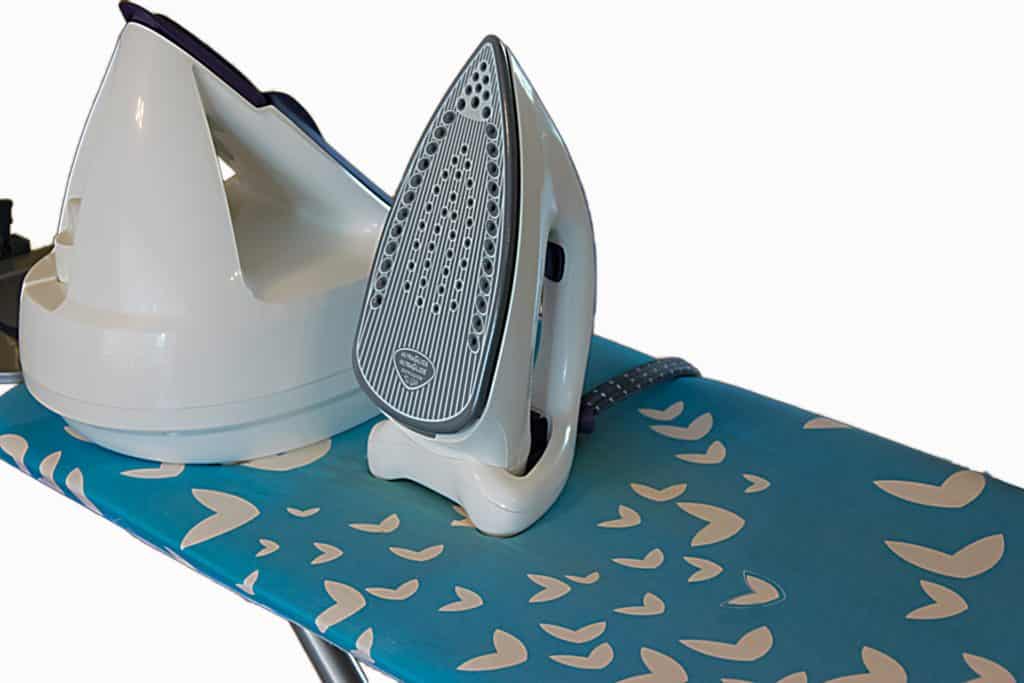
Soleplate
As the only portion that touches the clothes and does majority of the straightening work, the soleplate could be considered the most important part of a steam iron. Found on the bottom, it usually has a flat surface, is somewhat triangular, and when heated up to an appropriate temperature, could remove the clothes’ wrinkles gotten from the wash.
This is what most people would check out as the deciding factor whether a steam iron is good enough or not. In general, you might want to look for a soleplate that’s easy to maneuver and functional, but also can be maintained for a long time. There are several soleplate options to consider and each has different features and characteristics:
1. Stainless Steel
Stainless steel is made of an alloy of steel characterized by being inoxidizable. It’s used for many household tools, especially those used in the kitchen. This is why a stainless steel soleplate is the most common out of the other types of soleplates.
It’s popular for its durability. They are easy to clean and can distribute heat evenly throughout the plate. That’s why for a budget steam iron, the stainless steel material is a strong contender.
2. Ceramic
Compared to stainless steel, ceramic soleplates are better conductors of heat. They are capable of regulating heat well and it’s also regulated throughout the soleplate. Ceramic is known to become hard when fired or exposed to high heat, that’s why ceramic soleplates are sometimes metal or plastic soleplates with a coating of ceramic on it.
Aside from spreading heat evenly, ceramic soleplates also avoid statics and prevent the steam iron from sticking to the clothes and burning them when it’s heated up to a high temperature.
3. Titanium
A titanium soleplate is usually an alloy that’s combined with either aluminum or iron. They’re known to be corrosion-resistant, which means they’re also easier to clean and durable to last a long time.
It’s shiny surface can achieve an even amount of heat and transfer it to straighten out clothes’ wrinkles fast. The material is also lighter than others, so this might be a perfect choice if portability is in your priority list.
4. Non-stick
When steam irons are labeled as non-stick, it means the soleplate surface was coated with a non-stick material to reduce the chances of clothes sticking to it, especially when the temperature is high. The coat might even help with the even distribution of heat throughout the plate and will make it easier to clean with a rag. However, the non-stick coat might thin itself out or peel over time, which might also limit the lifespan of the steam iron itself.
5. Cast Iron
Cast iron soleplates are based from old methods and might not be as easy and effective as current technologies would allow nowadays. They are similar to old versions of ironing tools that don’t use electricity, so several issues like unregulated heat, rust, among many others quickly arise from this type of material.
Precision Tip
As mentioned, the soleplate of any kind of iron is usually triangular in shape. The pointed edge that is the topmost point of the soleplate is called the precision tip. It’s an essential detail to the making of ironing tools since it’s the only portion of the soleplate that can get to some parts of the clothes.
Some parts only the precision tip can reach are the area around the buttons and zippers, the edges and corners of jeans and tops that can’t be completely flattened on the ironing board, pleats, and many more.
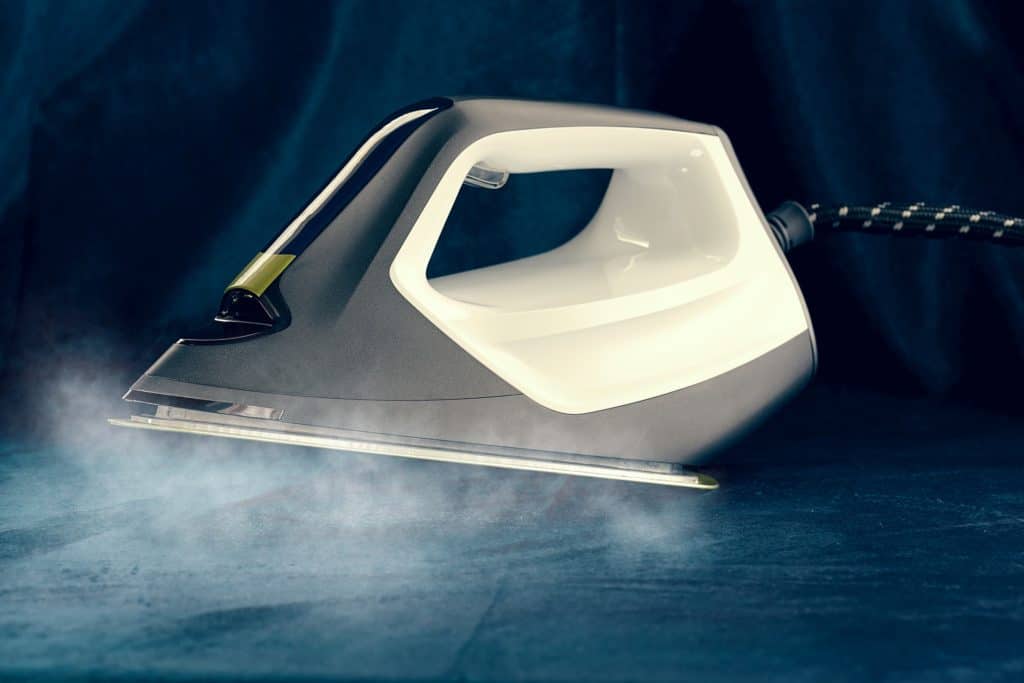
Weight
The traditional ironing tool with no steaming features are relatively known to be heavy. The heavy weight is sometimes attributed to the material used and the features put into the tool, but sometimes, they are made to be heavy intentionally because it helps flatten the clothes much faster.
Steam irons nowadays don’t always follow the same amount of weight traditional ironing tools had. For some models, the steam can make up for the reduced weight since the heated water misted onto the clothes quickens the chore.
When thinking of the weight, consider the effectivity of the steam iron with and without the extra heaviness. It will depend on how it assists the tool in ironing out your clothes, and also to your preference since a heavier one will tire your arms quicker too.
Water Tank Capacity
Steam irons are rarely ever without a water tank. It is what makes them a steam iron instead of just a regular one. The water tank is where it gets the water supply to spray onto your clothes, either automatically or with the push of a button.
Some have bigger water tanks than others, but each steam iron is made for a specific way or method of use. A portable steam iron might have a smaller one, which will be lighter and easy to bring. On the other hand, a bigger one will allow more water which will reduce the times you have to refill.
Ease of Refilling Water Tank
Sometimes you wouldn’t have a choice in the matter of the water tank’s capacity. It’s the one thing that is essential to a steam iron but can be compromised to make way for other more important features.
However, the ease of refilling a water tank is the only way to make up for that. The water tank may be small or large but when refilling it is easy, the act of refilling it no matter how many times wouldn’t double up the time it takes to do the chore overall.
Wattage
The wattage of your steam iron will determine how much it heats up in a certain amount of time. There’s usually a limit to the temperature your steam iron can get to, but how fast it reaches the maximum will be dependent on its wattage.
Though it’s not always the case, a higher wattage may mean your steam iron is able to heat up the soleplate much faster. With this, a good number to be a standard of your steam iron’s wattage is at least 1500.
Ergonomic Handle
The handle is a big part of the steam iron that is sometimes overlooked. Opposite to the soleplate, it’s the part that a person touches the most. In the same way that the soleplate needs to be flat to be able to straighten out clothes, the handle needs to be comfortable to make the steam iron usable for a reasonable amount of time.
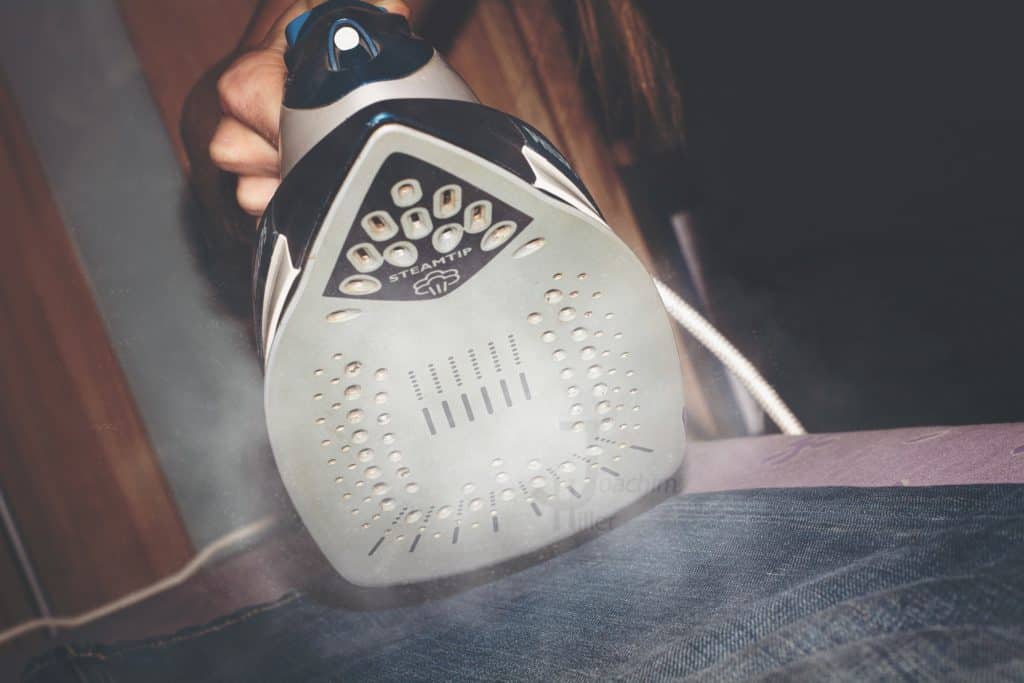
Though a steam iron may cut down the time it takes to iron clothes, the handle makes sure you’re able to maximize the iron’s capacity and your own abilities to lift and press down on clothes repeatedly.
For things to check on a steam iron handle, it must have a comfortable grip. Look out for handles with contours that are shaped according to a human hand, so it will feel natural when held. If your hand tend to sweat quickly, make sure that the handle of your steam iron has a non-slip feature.
Controls
The wattage is responsible for the aspects you can’t change about the steam iron’s electrical functions, while the controls are the ones that enable you to dictate the temperature and other features that depends on the steam iron model.
Though not important, the controls should be placed in an area near the handle that doesn’t make it easy to accidentally change the settings. However, it should still be easily reachable. Just look for something that requires a little more push and effort to maneuver, so the iron wouldn’t unintentionally be heated up or down.
Steam Holes
Steam irons usually have steam holes positioned strategically near the underside of the it or on the soleplate itself. How much steam generated by your iron every time it releases some is dependent on the steam holes.
The number, size, and placement of steam holes or their distances between each other will determine the amount and distribution of the steam. More holes and larger ones might mean there’s more steam coming out but it might dampen your clothes too much.
The right number of holes, proportional sizes and distances should be equally balanced out to get a sufficient amount and to maximize the steam coming from the iron.
Safety Features
As the steam iron is an electrical tool, there are some risks to using it. Technological advances have made electronic devices so much safer in general, but some extra features are still better just for safer measure.
The following features are not all that necessary, but they are incorporated to either prolong the lifespan of your steam iron or be a preventive feature to avoid accidents.
Anti-Scale Feature
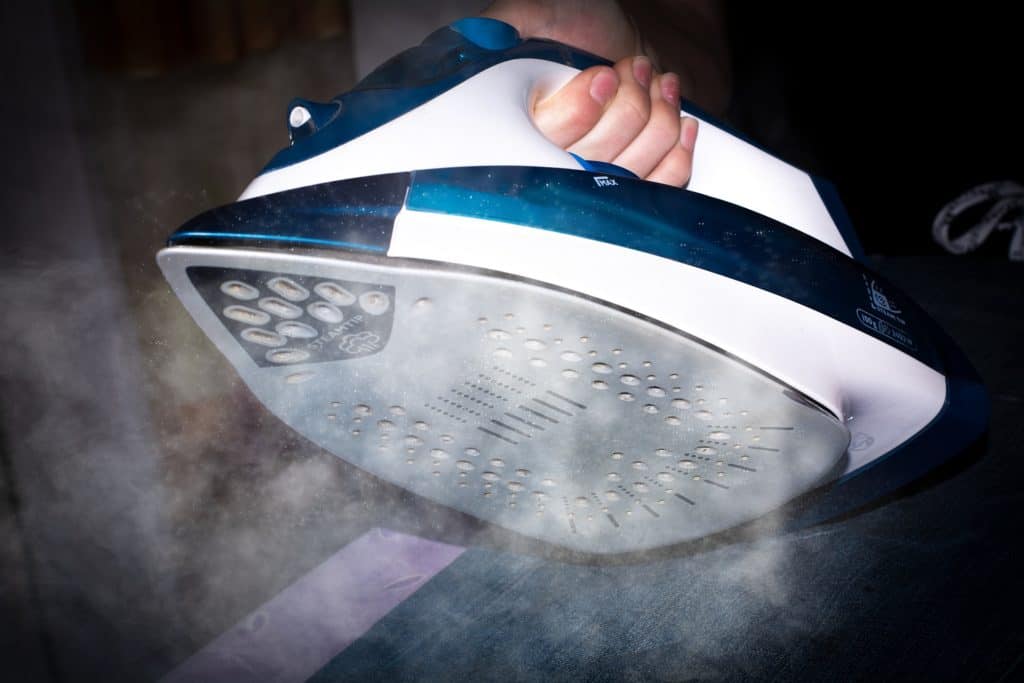
The anti-scale feature is more of the former. It’s a feature that is for maintenance, but it protects your steam iron so that it lasts longer. Tap water usually contains some elements or chemicals that make it harder or harsher than the purified type. This is why tap water is usually not advisable to drink.
Since your steam iron uses water and your metal soleplate comes in contact with it a lot from the steam, the chemicals in the hot water might stick to the material and eventually weaken the performance of your steam iron.
Descaling is the method used to remove the remnants which are called limescale. If you don’t want to make the extra effort of descaling, get a steam iron with an anti-scale feature or a limescale filter.
Auto Shut-Off
Auto shut off is a common feature nowadays and not just with steam irons. They’re a reliable feature especially if you’re one to always forget to turn things off, especially electric devices and tools. The auto shut off on steam irons will specifically prevent potential fires or damage on your clothes and ironing board.
Power Cord Length
The power cord is another part of the steam iron that is often overlooked. Sometimes it’s too late to realize that you have to stay close to the power outlet just to be able to use the steam iron. It will limit the mobility of the iron and might take up time because of the adjustments you have to do while ironing your clothes.
In general, it’s good to have a longer power cord so you can use the steam iron wherever is convenient. A good standard for the length is at least 6 feet, but some can reach up to 12 feet.
Conclusion
There’s something to learn from the advertising strategy of fashion brands of making their clothes look good on display. By being wrinkle-free and spotless, it automatically hikes up the appeal of the clothes to the buyer.
In the same way, when the clothes have the same flawless presentation while you’re wearing them, your outward appearance is instantly boosted even if you don’t feel as put-together on the inside. That’s the power of dressing up, but only with the help of a good steam iron with these features.

